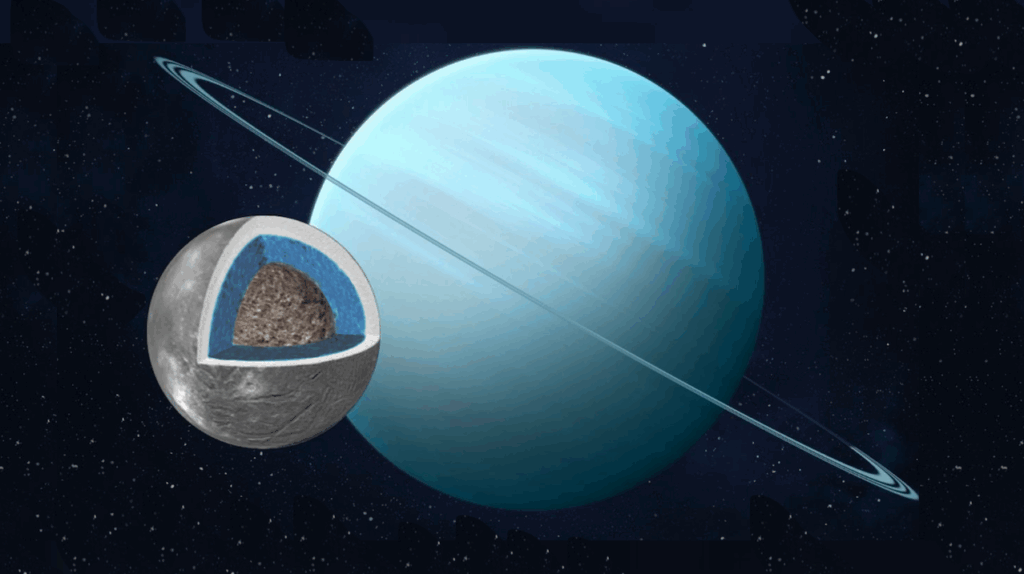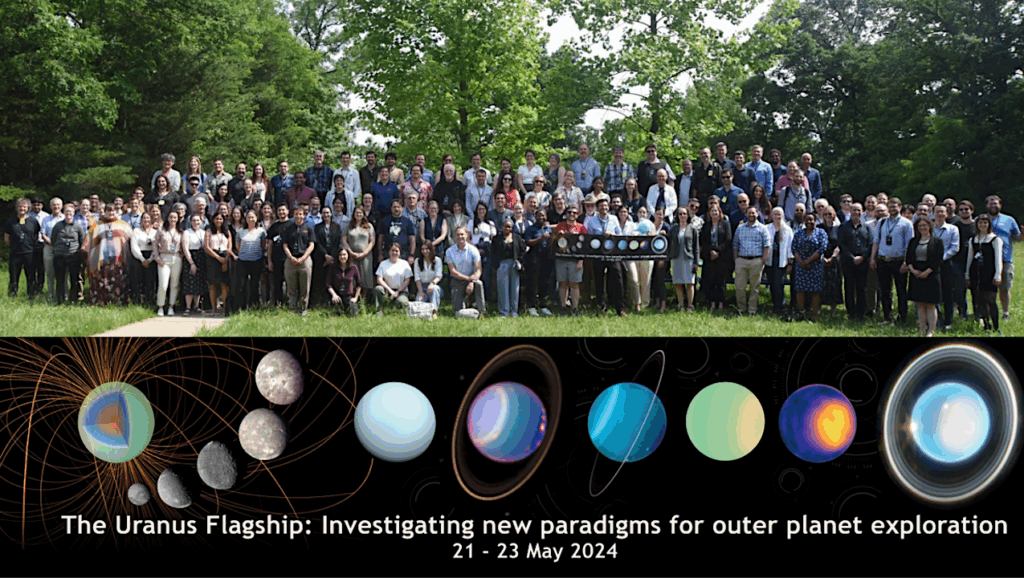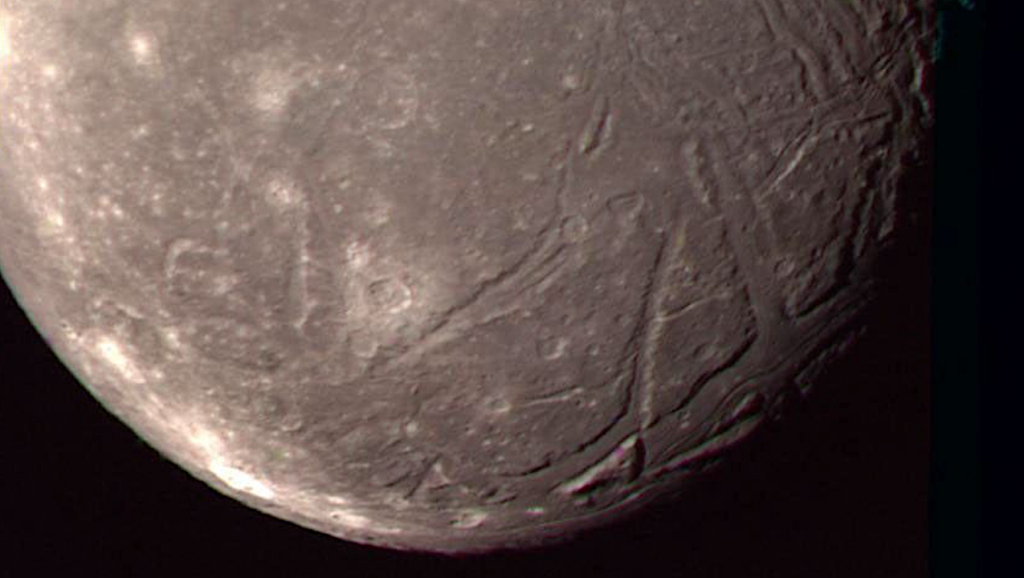In Search Of Subsurface Oceans Within The Uranian Moons

The Galileo mission to Jupiter discovered magnetic signatures associated with hidden sub-surface oceans at the moons Europa and Callisto using the phenomenon of magnetic induction. These induced magnetic fields originate from electrically conductive layers within the moons and are driven by Jupiter’s strong time-varying magnetic field.
The ice giants and their moons are also ideal laboratories for magnetic induction studies. Both Uranus and Neptune have a strongly tilted magnetic axis with respect to their spin axis, creating a dynamic and strongly variable magnetic field environment at the orbits of their major moons.
Although Voyager 2 visited the ice giants in the 1980s, it did not pass close enough to any of the moons to detect magnetic induction signatures. However, Voyager 2 revealed that some of these moons exhibit surface features that hint at recent geologically activity, possibly associated with sub-surface oceans. Future missions to the ice giants may therefore be capable of discovering sub-surface oceans, thereby adding to the family of known ocean worlds in our solar system.
Here, we assess magnetic induction as a technique for investigating sub-surface oceans within the major moons of Uranus. Furthermore, we establish the ability to distinguish induction responses created by different interior characteristics that tie into the induction response: ocean thickness, conductivity, and depth, and ionospheric conductance.
The results reported here demonstrate the possibility of single-pass ocean detection and constrained characterization within the moons of Miranda, Ariel, and Umbriel, and provide guidance for magnetometer selection and trajectory design for future missions to Uranus.
C. J. Cochrane, S. D. Vance, T. A. Nordheim, M. Styczinski, A. Masters, L. H. Regoli
Subjects: Earth and Planetary Astrophysics (astro-ph.EP); Geophysics (physics.geo-ph); Space Physics (physics.space-ph)
Cite as: arXiv:2105.06087 [astro-ph.EP] (or arXiv:2105.06087v1 [astro-ph.EP] for this version)
Submission history
From: Corey Cochrane
[v1] Thu, 13 May 2021 05:25:04 UTC (12,879 KB)
https://arxiv.org/abs/2105.06087
Astrobiology








